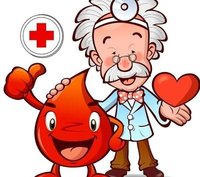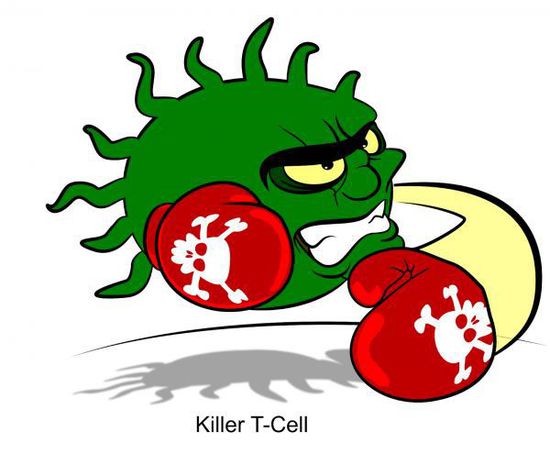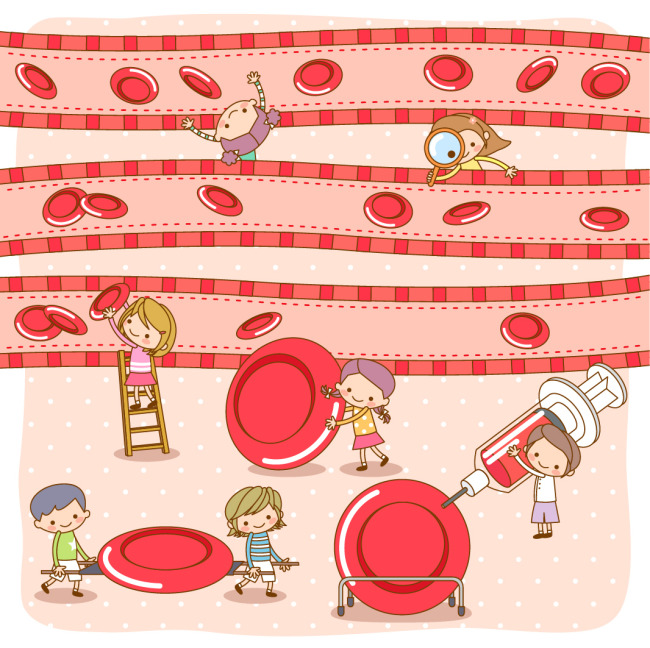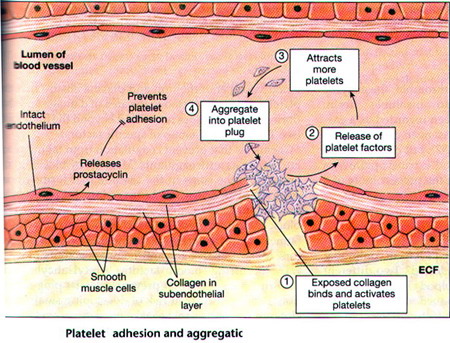| User Service > Work for Health | Technical support>Technology platform>Work for Health |

Blood routine examination should be performed before and after surgery, chemotherapy and radiotherapy. The abnormalities of the indicators will affect the progress of these treatments. However, a lot of patients and their families can not understand the laboratory test reports, and feel very confused. This is a brief description of the clinical significance of some laboratory projects for blood routine examination.
Ⅰ. Detection index
1. Hemoglobin(HB)
Normal reference value:
Male: 120~160g/L(12.0~16.0g/dl)【10】
Female: 110~150g/L(11.0~15.0g/dl【10】
Clinical significance:
Increase: Physical or pathological, rarely seen in lung cancer patients
Decrease: it can reflect the degree of anemia. The patients have poor nutritional status or excessive blood loss after operation, chemotherapy and radiotherapy.
2. Red Blood Cell Count(RBC)
Normal reference value:
Male: (4.0~5.5)×1012/L(400~550万/mm3)【0.01】
Female: (3.5~5.0)×1012/L(350~500万/mm3【0.01】
Clinical significance: Diagnose all kinds of anemia and polycythemia
Increase: Polycythemia vera, pulmonary heart disease, emphysema, plateau hypoxia and so on.
Decrease: Excessive blood loss after operation, chemotherapy and radiotherapy will reduce erythrocyte ; anemia caused by other conditions such as blood dilution, etc.

3.White Blood Cell Count(WBC)
Normal reference value: (4~10)×109/L(4000~10000/mm3)【0.001】
Clinical significance:
Increase: Acute infection, severe tissue injury, massive hemorrhage, poisoning, cancer and leukemia.
Decrease: This is the most common side-effect of chemotherapy patients. In addition, some infections, hematological diseases, autoimmune diseases, hypersplenism, and aplastic anemia can also occur.
4.Differential blood count(DC)
The normal blood contains three types of leukocyte---granulocytic, mononuclear and lymphocyte. Granulocytes can divide into eosinophils, basophils and neutrophils according to the different particle features in the cytoplasm.
(1) Neutrophils(N):
Normal reference value: 0.50~0.70(50%~70%)【0.01】
Clinical significance:
Increase: Acute bacterial infection, severe tissue damage or blood cell destruction, acute blood loss, acute poisoning, leukemia and cancer.
Decrease: toxic side effects of radiation or chemical drugs, viral infections, typhoid fever, some hematologic diseases, autoimmune diseases, hypersplenism, etc.
(2) Neutral rod-shaped nuclear granulocyte (N):
Normal reference value: 0.01~0.05(1%~5%)【0.01】
Clinical significance: To diagnose and judge the severity of infection in hematological system diseases.
(3) Eosinophil(E):
Normal reference value: 0.005~0.05(0.05%~5%)【0.01】
Clinical significance:
Increase:In allergic diseases, parasitic diseases, some skin diseases and blood diseases.
Decrease: In the patients with Corticosteroid therapy, severe surgery or infectious diseases, typhoid fever and paratyphoid fever.
(4) Basophil(B):
Normal reference value: 0~0.01(0%~1%)【0.01】
Clinical significance:
Increase: In chronic granulocytic leukemia, basophil leukaemia and some metastatic carcinoma.
Decrease: no clinical significance.
(5) Lymphocyte(L):
Normal reference value: 0.25~0.35(25%~35%)【0.01】
Clinical significance:
Increase: Infectious diseases caused by some viruses or bacteria, which are common in infectious mononucleosis, some chronic infections, such as tuberculosis recovery stage, lymphocytic leukemia, lymphosarcoma and so on.
Decrease: After exposure to radiation and the application of corticosteroids.
(6) Monocyte(M):
Normal reference value: 0.03~0.08(3%~8%)【0.01】
Clinical significance:
Increase: Subacute bacterial endocarditis, the convalescence of acute infection or monocytic leukemia.
Decrease: The clinical significance is not significant.
5. Platelet count(PLT):
Normal reference value: (100~300)×109/L((100~300)×103/mm3)【1.0】
Clinical significance:
Increase: Some chemotherapeutic drugs or radiotherapy can cause thrombocytopenia. There are idiopathic thrombocytopenia after splenectomy.
Decrease: The primary or secondary thrombocytopenic purpura such as disseminated intravascular coagulation, thrombotic thrombocytopenic purpura, aplastic leukemia, acute leukemia, typhoid fever, hypersplenism and cardiopulmonary bypass, Chemical poisoning.

Ⅱ. Routine blood test and its clinical significance
1.Hemoglobin (Hb) test:
The reference value:
Male: 120 ~ 160g/L
Female: 110 ~ 150g/L
Newborn: 170 ~ 200g/L.
Clinical significance:
Increased: chronic hypoxia (emphysema and congenital heart disease), severe dehydration, extensive burns, chronic carbon monoxide poisoning and polycythemia vera.
Decrease: anemia, leukemia, massive blood loss and hookworm disease, etc.
2.Red blood cell (RBC) test:
The reference value:
Male: 4 ~ 5.5 * 1012/L
Female 3.5 ~ 5 * 1012/L
Newborn 6 * 1012/L ~ 7.5
Clinical significance: Decrease significantly in megaloblastic anemia

3. White blood cell (WBC) test:
The reference value:
Adult 4 ~ 5.5 x 109/L
Infant (under two years of age) 11~12 x 109/L
Newborn 15~20 x 109/L.
Clinical significance:
Increase: bacterial infection, uremia, severe burns, infectious mononucleosis, leukemia and stress state (acute hemorrhage and major operation).
Decrease:In viral infection, injury and paratyphoid fever, malaria, aplastic anemia, severe infection, radiation, after chemotherapy and aleukemic leukemia.
4. Leukocyte differential count (DC):
The reference values:
Neutrophils 0.5~0.70×(50~70%)
eosinophils 0.005~0.05(0.5%~5%)
basophils 0~0.01(0~1%)
lymphocyte 0.2~0.40(20%~40%)
monocyte 0.03~0.08(3%~8%).
Neutrophil
Increase: More common in acute suppurative bacterial infection, granulocytic leukemia, acute hemorrhage, hemolysis, postoperation, uremia and so on.
Decrease: In typhoid and paratyphoid, malaria, agranulemia, radioactivity and tumor chemotherapy.
Eosnophils
Increase:In allergic diseases, parasitic diseases, and so on;
Decrease: In typhoid and paratyphoid.
Basophil
Increase: In chronic granulocytic leukemia, Hodgkin's disease and lead poisoning.
Reduction:immediate allergy, adrenocorticotropin and glucocorticoid overdose, stress response, hyperthyroidism, Cushing syndrome, etc.
Lymphocyte
Increase: In virus infection
Decrease: In immunodeficiency disease
Monocyte
Increase: In some bacterial infections and monocytic leukemia
5.Platelet (PLT) test:
The reference values: 100~300×109/L
Increase: acute hemorrhage, acute hemolysis, polycythemia vera, essential thrombocythemia and chronic myelogenous leukemia.
Decrease: In hematopoietic dysfunction (such as acute leukemia and aplastic anemia), excessive destruction of platelets (such as idiopathic thrombocytopenic purpura, hypersplenism and systemic lupus erythematosus) and increased consumption (such as DIC, thrombotic thrombocytopenic purpura)
6. Determination of hematocrit(Ht)
The reference value:
Male: 0.42~0.49(42%~49%)
Female: 0.37~0.43
Newborn: 0.49~0.54
Increase:In blood concentration andpolycythemia vera caused by dehydration and extensive burns.
Decrease: In anemia and blood dilution.
7.Mean corpuscular volume(MCV)
The reference value:
Adult: 79~101fl
Children: 73~89f1
Newborn: 105fl
For anemia classification:
The enlargement of MCV is megaloblastic anemia, conversely the reduction of it is Hypochromic microcytic an emia (such as severe iron deficiency anemia) and hereditary spherocytosis. Normal erythrocytic anemia is normal.
8.Mean Corpuscular Hemoglobin(MCH)
The reference value:
Adult: 27~32ρg
Newborn: 40ρg。
For anemia classification:
The increase of MCH is macrocytic anemia, conversely the reduction of it calls pure Hypochromic microcytic anemia and low pigment-small-cell anemia.
9.Mean corpuscular hemoglobin concentration(MCHG):
The reference value:
Children: 340~410g/L
Newborn: 450g/L。
MCHG is normal decrease of macrocytic anemia; MCHG is normal of pure Hypochromic microcytic anemia and it reduces of low pigment-small-cell anemia.
10. Red cell (volume) distribution width (RDW)
The reference value: Adult: 0.11~0.16
RDW unites with MCV can divide anemia into small cell uniform anemia and small cell uneven anemia, normal cell uniform anemia and normal cell uneven anemia, as well as large cell uniform anemia and large cell uneven anemia. RDW has a dynamic change during the process of treatment.
11. Reticulocyte count (RC) count:
The reference value:
Adult: 0.5~1.5%
Newborn: 3.0%~6.0%.
The increase of RC indicates that the marrow hemopoietic function is active, particularly of hemolytic anemia. Effective treatment of malignant anemia or iron deficiency anemia will increase.
12. Erythrocyte sedimentation rate (ESR):
The reference value:
Male: 0~15mm/h
Female:0~20mm/h (the upper limit for men and women over 60 is 24 and 34mm/h respectively.)
The active period of tuberculosis and rheumatism, acute inflammation, anemia and malignant tumor are increasing rapidly. Young children, women's menstrual period, Pregnancy lasts from 3 months to 1 month postpartum and older people over 60 years of age showed a physiological increase.
Ⅲ. DEWEI is committed to the healthy development of human being, specializing in diagnostic reagent for blood cell analyzer.
DEWEI MEDICAL EQUIPMENT CO.,LTD | National Service Hotline: +86 757 25516612 Note: Any third party or instrument name involed in the website, it is only for describing Dewei's Product uses. Copyright: DEWEI MEDICAL EQUIPMENT CO.,LTD